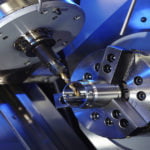It’s the time of year for saving money!
In the world of high performance audio, there exists multiple opinions on the design, manufacture and enjoyment of audio loudspeakers. Some may think building a speaker system is no more difficult than securing a few drivers from an online catalog, do some wood working in the garage, slap it all together and music awaits. Others possibly see a speaker as a bit of a mystery, especially since it is essentially electricity in, music out. Others still see a speaker system as a complex and highly engineered creation.
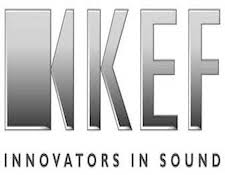 Recently, in a trip I made to Europe, I decided to leave four days early and visit the KEF facility in Maidstone-Kent, UK. As a satisfied owner of a set of Blades, and at the suggestion of Johann Coorg, the Brand Manager for KEF, I thought it would be interesting to actually see how my speakers were designed and built.
Recently, in a trip I made to Europe, I decided to leave four days early and visit the KEF facility in Maidstone-Kent, UK. As a satisfied owner of a set of Blades, and at the suggestion of Johann Coorg, the Brand Manager for KEF, I thought it would be interesting to actually see how my speakers were designed and built.
KEF was founded in 1961 by Raymond Cooke and from their inception have been a company dedicated to utilizing cutting edge technology. From the start, KEF has explored innovative ways to improve their loudspeakers sonically. Through the 1970’s, advancements came largely as a result of trial and error. Once the 1980’s and the computer age manifested itself, KEF sought advanced solutions through Computer Aided Design, or “CAD” as it is called. Looking through the KEF museum in the Maidstone facility is a window into how their line of speakers has evolved.
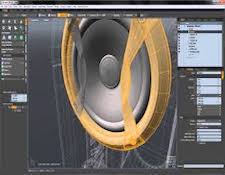 I met with Jack Oclee-Brown, the head acoustical engineer, at the facility in Maidstone-Kent, UK that has been KEF’s home since beginning in business. Building a speaker at KEF is divided into several disciplines. One is acoustical engineering, or how the individual drivers will perform acoustically. Another is the actual engineering and assembly of the drivers themselves. Note also that KEF builds drivers for the entirety of their speaker line in KEF owned facilities utilizing their own designs. Next is mechanical engineering which determines the shape of the cabinet, where and how internal bracing should be attached, how the drivers will attach, and verification of how the components and cabinets will actually be put together. And of course the last step is sales and marketing.
I met with Jack Oclee-Brown, the head acoustical engineer, at the facility in Maidstone-Kent, UK that has been KEF’s home since beginning in business. Building a speaker at KEF is divided into several disciplines. One is acoustical engineering, or how the individual drivers will perform acoustically. Another is the actual engineering and assembly of the drivers themselves. Note also that KEF builds drivers for the entirety of their speaker line in KEF owned facilities utilizing their own designs. Next is mechanical engineering which determines the shape of the cabinet, where and how internal bracing should be attached, how the drivers will attach, and verification of how the components and cabinets will actually be put together. And of course the last step is sales and marketing.
When KEF designs any speaker, including my Blades, sonics are first addressed. Utilizing a custom software program written by KEF engineers, every component used in a driver can be designed and tested in the computer. For instance, engineers can take a small, pie shaped sliver of the aluminum cone material used in a UniQ driver, attach it to a surround, input the tangerine waveguide and then apply measured motion that represents the pistonic movement the driver will endure under normal operation. The software can track how the performance characteristics measure up to a predefined sonic goal. It takes into consideration how the cone assembly is shaped and constructed and any features that may result in that assembly. Keep in mind this is only a small sliver of a cone, not an entire driver. The shape of the cone may then be modified and compared to other iterations to identify the best performing design. This process can be utilized on each and every component part of the driver.
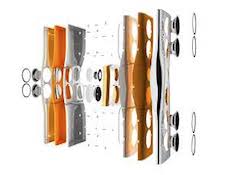 Once driver design is complete, the software can be tailored to show that one individual driver in a signal chain. Starting with a virtual amp, the signal chain can be traced and the actual performance of the finished driver will be displayed. In the example I was shown, different combinations of waveforms were all measured by various changes to the signal chain – and these changes were measured against a standard. This is a highly evolved level of engineering that fulfills, and carries forward, the ideals Raymond Cooke set back in 1961. It is also a very powerful tool as performance parameters may be mapped and identified before any drivers are physically built, thus saving time and money.
Once driver design is complete, the software can be tailored to show that one individual driver in a signal chain. Starting with a virtual amp, the signal chain can be traced and the actual performance of the finished driver will be displayed. In the example I was shown, different combinations of waveforms were all measured by various changes to the signal chain – and these changes were measured against a standard. This is a highly evolved level of engineering that fulfills, and carries forward, the ideals Raymond Cooke set back in 1961. It is also a very powerful tool as performance parameters may be mapped and identified before any drivers are physically built, thus saving time and money.
Upon finishing the driver design, it is time for the mechanical engineers to take over. Their job is the creation of the cabinet, how it should be braced, how much sound absorbing material should be used, where it is located and any condition about the cabinet itself. Utilizing 3D Modeling Software, the cabinet may be turned, manipulated, sectioned, and examined in an almost endless variety of ways to ensure maximum cabinet performance. Any dynamic speaker must undergo this dedication to engineering exploration because there is air being moved inside the speaker just as there is air movement outside the speaker. So it is important to understand cabinet design because just as sonic energy is projected into the room, inside the cabinet there is sound energy across the entire frequency spectrum, standing waves and harmonics that all affect sonic quality. Once all the design work is complete, the speaker is ready for assembly.
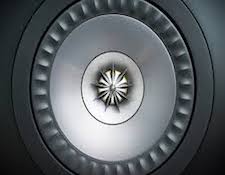 Now to be fair, KEF is not alone in their dedication to a highly engineered product. A look at most any of the more noted speaker companies will reveal similar as well as unique engineering disciplines. I think the salient point here is that a modern speaker is a highly evolved and highly engineered product. From the time my Blades were first conceived to being released for production, KEF spent five years doing research and development to ensure maximum performance – and five years of concomitant engineering costs.
Now to be fair, KEF is not alone in their dedication to a highly engineered product. A look at most any of the more noted speaker companies will reveal similar as well as unique engineering disciplines. I think the salient point here is that a modern speaker is a highly evolved and highly engineered product. From the time my Blades were first conceived to being released for production, KEF spent five years doing research and development to ensure maximum performance – and five years of concomitant engineering costs.
Speakers are somewhat of a marvel of engineering. And
yes, it is certainly possible to build something in the garage that will play music. What is important to remember is the purchase of any modern high performance speaker system is the result of a research and design effort that could very likely encompass teams of engineers, ten upon tens of thousands of dollars in computer software and years of developmental time, and the associated costs, all so a song may be played on a stereo.
In part two we’ll cover actually building a speaker.


